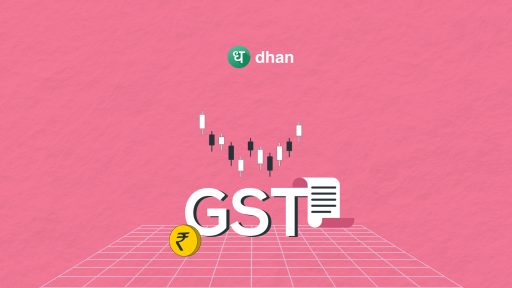Capital gains tax is a tax on the profit you make from selling capital assets. These assets can include Stocks, Mutual funds, Bonds, and others.
It is like an income tax but on your investments. The tax rate relies on how much you hold on a tax.
In this article, we will understand what is capital gains tax gains and what factors to consider.
What is Capital Gains Tax?
A capital gain tax can be defined as a tax that you pay on making a profit by selling assets. These assets can be stocks, bonds, or others.
It is a tax applied to the increase in the value of an asset at the time of liquidation, obtained by calculating the difference between the buy price and the sell price.
The capital gain tax gains can be short-term and long-term gains. Short-term gains held for less than a year are taxed as per your slab rate.
At the same time, the long-term gains tax is held for more than a year. It is generally low depending on an individual’s income.
Capital Gain Tax in India
Capital gain taxes apply to the profits that you earn from selling assets. Types of capital gains tax are as follows:
Short-Term Capital Gains (STCG)
For example, if you sell a stock while online investing after 3 months of buying it then it will be liable for STCG taxes.
Short-term capital gains are taxed according to your individual income tax slab rate.
However, you should remember that the Securities Transaction Tax (STT) is paid during the purchase.
Long Term Capital Gains (LTCG)
Long-term capital gain tax or LTCG tax applies to the assets held for more than 12 months. Profits from the sale of these assets are treated as long-term capital gains.
Assets like preference shares, equities, UTI units, securities, equity-based mutual funds, etc. fall into this category if held for over a year.
The LTCG on an equity share and equity-oriented mutual funds exceeding Rs. 1 lakh per year are taxed at a flat rate of 10% without the indexation benefit.
Meanwhile, the LTCG, on the other assets, is taxed at 20% with the indexation benefit and an adjusting cost for inflation.
Different assets have different STCG tax and LTCG tax. here’s a simple table outlining different assets and their corresponding Short-Term Capital Gains and Long-Term Capital Gains tax rates:
| Type of Investment | Holding Period for Long-Term Capital Asset | Long Term Capital Gain Tax (LTCG) | Short Term Capital Gain Tax (STCG) | Remarks |
| Stocks | > 1 year | 10% of gain | 15% of gain | LTCG is applicable if total gains exceed Rs. 1 Lakh in a financial year. |
| Unit Linked Insurance Plan (ULIPs) | > 5 years | 10% of gain | 15% of gain | LTCG is applicable if total gains exceed Rs. 1 Lakh in a financial year. |
| Equity-Oriented Mutual Funds | > 1 year | 10% of gain | 15% of gain | LTCG is applicable if total gains exceed Rs. 1 Lakh in a financial year. |
| Other Mutual Funds | > 3 years | 20% with inflation indexation | Taxed based on the income tax slab | |
| Government and Corporate Bonds | > 3 years | 20% with inflation indexation | Taxed based on the income tax slab | |
| Gold | > 3 years | 20% with inflation indexation | Taxed based on the income tax slab | |
| Gold ETF | > 1 year | 10% of gain | Taxed based on the income tax slab | LTCG is applicable if the total exceeds Rs. 1 Lakh in a financial year. |
| Immovable Property | > 2 years | 20% with inflation indexation | Taxed based on the income tax slab | |
| Movable Property | > 3 years | 20% with inflation indexation | Taxed based on the income tax slab | No tax for LTCG reinvested in approved assets. |
| Privately held Stocks | > 2 years | 20% with inflation indexation | Taxed based on the income tax slab |
Dhan recently became the first broker in the world to allow Options Trading from TradingView's Trading Panel! Go check it out here!
How to Calculate Capital Gains?
Capital gains are calculated based on the type of capital gain (STCG or LTCG).
The formulas for short-term capital gain and long-term capital gain are as follows:
1) Short-Term Capital Gain
Let us take an example of when you buy and sell a stock within 3 months. Let’s say you bought a lot of stock at ₹10,00,000.
- Bought at: ₹10,00,000
- Sold at ₹15,00,000.
- Profit: ₹5,00,000
Short-term Capital Gain = Sell Price – Buy Price
Which is nothing but your profit.
= ₹15,00,000 – ₹10,00,000
= ₹5,00,000
Thus, the short-term capital gain in this case would be ₹5,00,000.
2) Long-Term Capital Gain
Let us take an example of when you buy and sell a stock after holding it for more than 12 months. Let’s say you bought a lot of stock at ₹10,00,000.
- Bought at: ₹10,00,000
- Sold at: ₹15,00,000
- Profit: ₹5,00,000
Indexation benefit: Suppose the Cost Inflation Index (CII) at the time of purchase was 250 and at the time of sale was 280. The indexed purchase price would be:
Indexed purchase price = (Purchase price × CII at sale) / CII at purchase
Indexed purchase price = (₹10,00,000 × 280) / 250
Indexed purchase price = ₹11,20,000
Adjusted profit after indexation:
Adjusted profit = Sale price – Indexed purchase price
Adjusted profit = ₹15,00,000 – ₹11,20,000
Adjusted profit = ₹3,80,000
Therefore, the Long-Term Capital Gain after indexation benefit is ₹3,80,000.
By the way, there are legal ways to save short-term and long-term tax. Read this blog to know more: How to Save Tax in India?
Conclusion
Capital gains tax is what you have to pay to the government when you make profits on various assets like houses or stocks.
The tax you pay depends on how long you’ve owned and the amount you sold your investments. Understanding these rules helps you manage your investments better and plan your finances well.




